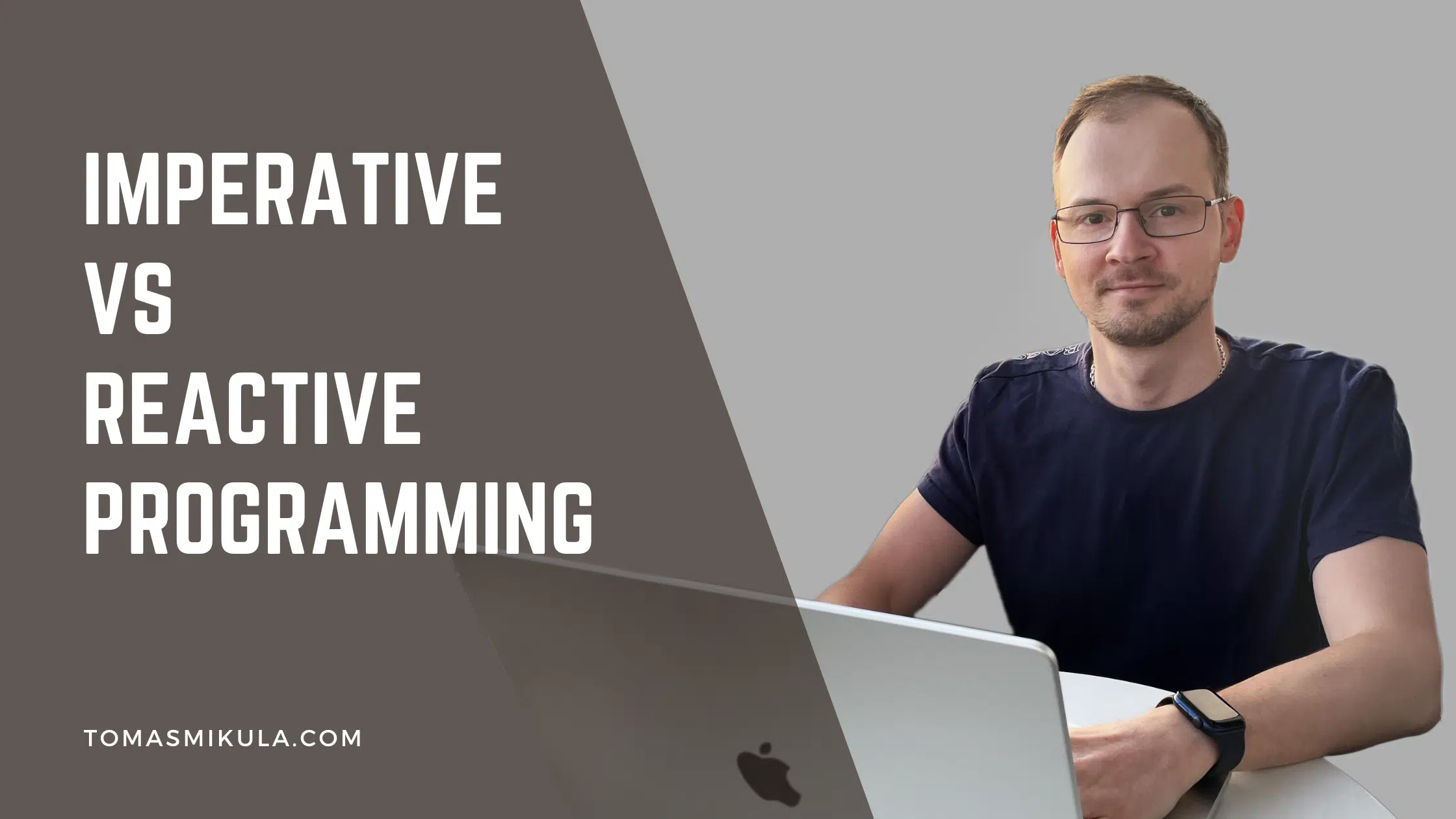Overview
Reactive and imperative programming are two different programming paradigms with distinct approaches to managing and executing code.
Both imperative and reactive programming have their own advantages and disadvantages, and the choice between the two depends on the particular problem that is being solved.
Let’s dive in!
Imperative Programming
Imperative programming – focuses on describing a sequence of steps that the computer must follow in order to solve a problem. It is centered around the use of statements that change a program’s state, and the programmer specifies the exact order in which these statements should be executed. The programming style is characterized by its focus on describing how a program should work, rather than what it should do.
Imperative programming is best used in scenarios where you want to have complete control over the flow of a program and where you want to specify the exact steps that need to be taken to accomplish a task. This makes it ideal for implementing simple algorithms, procedures, or scripts that need to be executed in a specific order.
Some examples of when you might use imperative programming include:
- Implementing simple utility scripts that perform specific tasks, such as converting files from one format to another.
- Implementing procedural algorithms that have a clear set of steps to follow, such as a sorting algorithm.
- Implementing lower-level system components, such as drivers or firmware, that need to perform specific operations in a specific order.
- Implementing game logic, where the order of events and interactions is critical to the player experience.
In general, imperative programming is a good choice when you want to have a high degree of control over the flow of a program and when the solution to a problem can be easily expressed as a sequence of steps.
Why did the imperative programmer cross the road? To get to the other side of the code and change the state!
Reactive Programming
Reactive programming focuses on designing systems that respond to changes in data over time. It is centered around the use of reactive data streams, which are sequences of events that can be processed as they occur. The programming style is characterized by its focus on designing systems that react to changes in data, rather than specifying how a program should work.
Reactive programming is best used in scenarios where you want to react to changes in data over time, or when you want to create applications that are highly responsive, scalable, and maintainable.
Some examples of when you might use reactive programming include:
- Developing real-time applications, such as games, chat systems, or financial dashboards, that need to respond quickly to user interactions and changes in data.
- Developing event-driven systems, such as web services or microservices, that need to handle large amounts of data and events in a scalable and efficient manner.
- Implementing user interfaces, where the state of the UI is driven by user interactions and changes in data.
- Developing systems that handle multiple data streams, such as video and audio, and need to process and respond to these streams in real-time.
In general, reactive programming is a good choice when you want to build applications that are highly responsive, scalable, and maintainable, and when you want to react to changes in data over time.
Why did the reactive programmer never have a bad day? Because they always react to changes in a positive way!
Let’s cook some omelette!
Cooking – Imperative Way
In simple terms, you can think of imperative programming like being a head-chef in a kitchen, giving strict instructions to your other chefs on exactly how to cook each dish. You tell your chefs exactly what ingredients to use, in what order, and how much of each to use.
Here’s an example:
function make_omelette() {
crack_eggs();
whisk_eggs();
heat_pan();
add_butter();
pour_eggs();
put_ham();
flip_omelette();
put_on_plate();
serve_omelette();
}:
make_omelette();
It’s like you’re giving a set of commands, one after another, to get the desired outcome: a delicious omelette!
Imperative programming is great when you want to have complete control over every step of the process, but it can get quite tedious when the process gets more complicated. Plus, if one of your chefs makes a mistake, you have to go back and fix it yourself!
Cooking – Reactive Way
Using the same example as above, instead of giving each chef strict instructions, you simply set up the kitchen with all ingredients and equipment and let chefs do their thing.
Here is a JavaScript example:
import { Observable } from "rxjs";
function make_omelette() {
const ingredients = new Observable(subscriber => {
subscriber.next("eggs");
subscriber.next("cheese");
subscriber.next("ham");
subscriber.next("butter");
subscriber.complete();
});
const eggsChef = ingredients.filter(ingredient => ingredient === "eggs");
const cheeseChef = ingredients.filter(ingredient => ingredient === "cheese");
const hamChef = ingredients.filter(ingredient => ingredient === "ham");
const butterChef = ingredients.filter(ingredient => ingredient === "butter");
const omelette = Observable.zip(eggsChef, cheeseChef, hamChef, butterChef, (e, c, h, b) => "Cheesy Ham Omelette");
omelette.subscribe(dinner => console.log("Dinner is ready:", dinner));
}
make_omelette();
In this example, the head-chef sets up the kitchen by creating an observable stream of ingredients. Each chef filters the stream to get the ingredients they need for their part of the dish. The head chef then combines the dishes into the final product: a delicious cheesy ham omelette! The best part is, with reactive programming, if one ingredient is delayed or changes, the omelette updates automatically. No need for the head-chef to intervene!
Conclusion
In conclusion, both imperative and reactive programming are powerful tools for solving different kinds of problems, and the choice between the two depends on the specific requirements of the problem at hand. By understanding the strengths and weaknesses of each approach, YOU as a developer can make informed decisions about the best programming paradigm to use for their particular use case.





